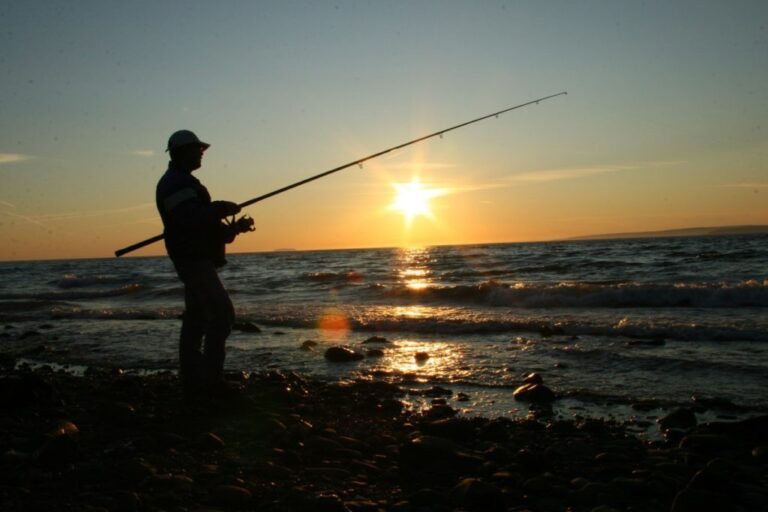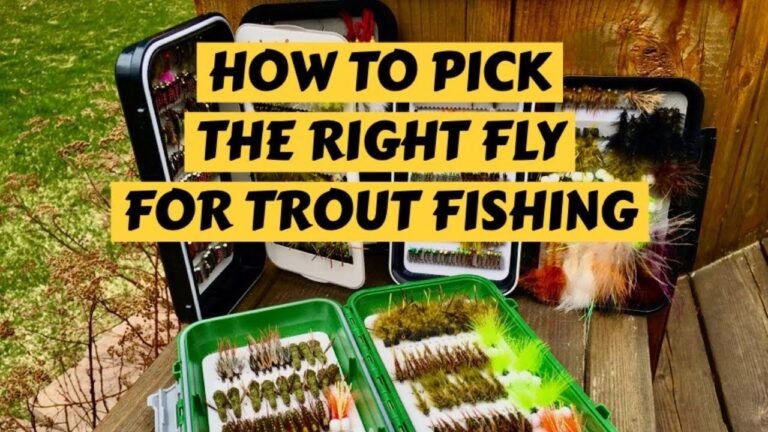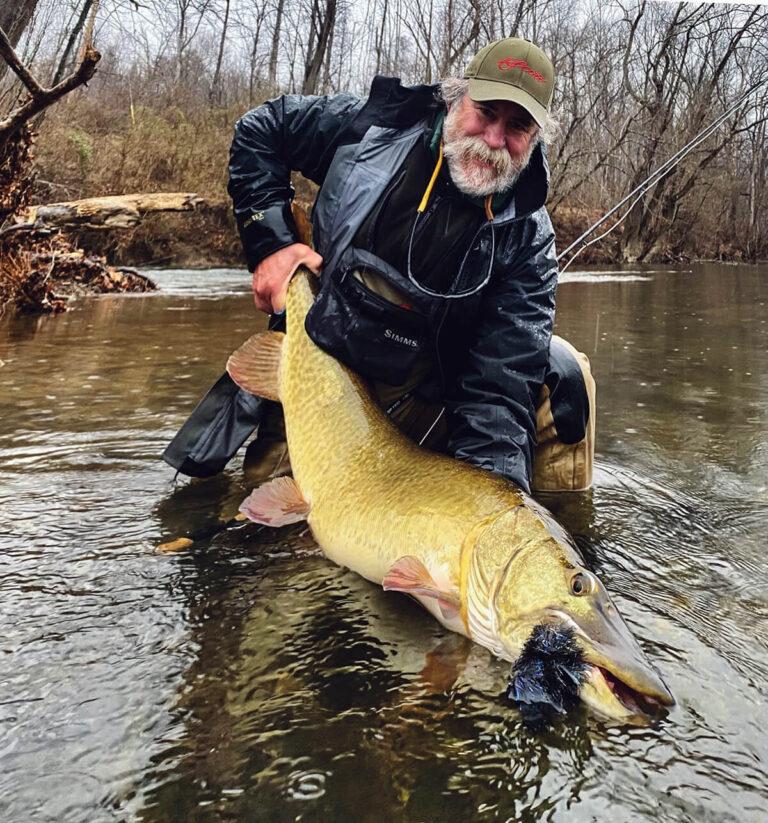The best times for flats fishing are during the incoming and outgoing tides, with the most productive time being the last two hours of the incoming tide and the first few hours of the outgoing tide. Flats fishing is a type of shallow-water angling that involves targeting various species of fish on flat, shallow water areas near shorelines, islands, and sandbars.
This fishing strategy is popular among anglers because of the exciting challenges and opportunities of catching fish in shallow water. However, timing is crucial to success when it comes to flats fishing. The tides play an essential role in the life cycle and feeding habits of fish, making it a key factor for anglers to consider.
Therefore, knowing the best times to fish flats can increase the chances of reeling in a big catch.

Credit: www.amazon.com
Optimal Times For Flats Fishing: Understanding The Science
If you’re an avid angler, you must know that the time of the day can have a significant impact on your flats fishing expedition. There are peak hours when you’re more likely to get a bite, and understanding the science behind it will help you maximize your catch.
Here are some of the essential things you need to know:
The Importance Of Sun And Moon Positions
The sun and moon positions are crucial in determining the best time to go flats fishing. Here’s why:
- Fish activity is generally higher during low-light periods.
- A moon phase can affect the tides and the amount of light received by the fish.
- The sun’s position can directly impact sight-fishing, as it affects the fish’s visibility and gives away their presence.
- In general, early morning and late afternoon are considered the best times for flats fishing because the light’s angle creates better visibility for anglers and fishes.
Effect Of Tides And Currents On Fish Behavior
Tides and water currents play a crucial role in fish behavior. Understanding how they affect the feeding and movement of the fish can help you determine the best time to go flats fishing. Here are some key points:
- Incoming tide is the best time to fish for flats. The rising tide brings in more baitfish and other organisms that the game fish feed on.
- Outgoing tide, on the other hand, creates current that can carry the bait fish and other prey away, making it harder for game fish to find food.
- Fish are more likely to feed during the tidal changes.
- Slack tide, when there is no current movement, is typically slower in fishing action as fish usually remain idle.
Best Water Temperature For Flats Fishing
Water temperature is another critical factor to consider when flats fishing. The ideal temperature for flats fishing varies from species to species. However, some general rules of thumb are:
- Most game fish species prefer water temperatures between 70°f and 80°f.
- During colder months, fish tend to move to shallow depths because the temperature is generally higher.
- During hot summer months, fish retreat to deeper and cooler water, making it harder to find them on flats.
Weather Considerations: Wind And Precipitation
Lastly, weather plays a crucial role in determining the optimal time for flats fishing. Here are some key points:
- Wind can have a significant impact on the fishing experience. A light breeze can be helpful in creating movement on the surface, but too much wind can create excessive waves, making it harder to spot the fish.
- Precipitation, like rain or snow, can decrease fish activity. However, overcast days can be an advantage as they also create a low-light environment.
Understanding the science behind peak hours for flats fishing can enhance your angling experience and increase your chances of a successful catch. So the next time you plan your flats fishing expedition, keep these key points in mind!
The Do’S And Don’Ts Of Flats Fishing At Different Times
Best times for flats fishing: the do’s and don’ts of flats fishing at different times
When it comes to flats fishing, it’s vital to understand that the best times for fishing can change depending on the time of day. Throughout the day, there are different conditions that you must adapt and adjust to, as well as different fishing strategies that you should employ.
We will look at the do’s and don’ts of flats fishing at different times to help you get the most out of your fishing experience.
Early Morning Fishing Strategies
Early morning is one of the best times for flats fishing, and it’s also a great time to catch big fish. The water is cooler, and the light is still low, making it easy to spot shallow water fish. Here are some strategies for early morning fishing:
- Start by finding a spot that is known for holding fish during early morning hours.
- Use lures that replicate small fish, as the game fish that feed in the early morning are looking for small prey.
- If you’re using bait, use live bait as it’s more effective in the early hours.
- Cast your line towards the shore or near structures like rocks or mangroves where fish are known to be.
Mid-Day Tactics: Adjusting To Changing Conditions
As the day progresses, the sun gets higher, the water gets warmer, and the light becomes brighter. This change in conditions can make fishing challenging, but with the right tactics, you can still have a successful fishing trip. Here are some mid-day tactics to keep in mind:
- Switch to lures that work well in bright light conditions, such as spoons or jigs.
- When the water is warmer, fish tend to swim in deeper waters. Use deeper diving lures or live bait to attract them.
- Shaded areas like docks or trees provide relief from the sun and are likely to hold fish.
- Be patient and keep an eye on the water. As you move around, you may find that the fish are congregating in certain areas.
Evening Fishing Techniques
As the sun begins to set, the water starts to cool, making it an excellent time for evening fishing. The lower light also makes spotting fish easier, which can be a significant advantage. Here are some techniques to try during the evening:
- Fish near structures like mangroves or rock piles where baitfish may be hiding.
- Use topwater lures, as game fish tend to feed closer to the surface during the evening.
- Pay attention to the direction of the tide and fish in areas where the water is moving.
- Be aware that as the light fades, the fish become more active. Keep your bait or lures moving to simulate prey.
Night Fishing: A Completely Different Ball Game
Night fishing can be the most rewarding experience as it offers a wholly different perspective on flats fishing. With the right technique, you can catch some of the most significant fish of the day. Here are some tactics to keep in mind for night fishing:
- Use live bait and fish in shallow waters where bait fish are likely to congregate.
- Fish near lights, which attract small baitfish and the game fish that follow them.
- Use lures that make noise or vibrations to help fish locate them.
- Be mindful of your surroundings and carry a waterproof light for safety.
Trap To Avoid While Fishing
To make the most of your fishing experience, it’s essential to avoid some common traps that many anglers cannot avoid. Here are some mistakes to avoid:
- Avoid using too heavy tackle, which can spook the fish.
- Always clean up after yourself, fishing spots are a shared public resource.
- Don’t crowd other anglers, respect their space and right to enjoy the fishing location.
- Don’t neglect to research and be aware of local fishing regulations. Knowing the rules will help ensure successful and legal fishing.
In conclusion,
Flats fishing is a unique and nuanced way of fishing that requires knowledge and skill to master. By understanding how the different times of day affect the fish’s behavior, you can significantly improve your chances of catching fish. Remember, respecting the location and the fish is a crucial part of being a responsible angler.
So head out to the flats and put your new knowledge to good use!
Preparing For A Flats Fishing Trip: What To Know And What To Bring
Looking to test your fishing skills? Experience flats fishing, which involves catching fish in shallow-water areas, using appropriate gear and techniques. However, before embarking on this thrill-seeking adventure, it is essential to prepare adequately.
Researching The Flats Fishing Destination
Researching the right destination is crucial for a successful flats fishing trip. Take some time to learn about the area, its fish species, weather, and tide conditions. This will give you a better understanding of what to expect and prepare for.
Here’s what you need to look for:
- The type of fish available and their patterns, including feeding habits, preferred habitats, and migration seasons
- The ideal weather and tide conditions for fishing in that area
- The permitted fishing methods and regulations
- The services available like hiring a guide or renting a boat in that region
Selecting The Right Gear For Optimal Fishing
Selecting the right gear can make a significant difference in flats fishing. Here’s what you will need:
- Choose a lightweight spinning rod between 6-8 feet for easy handling and mobility
- A quality spinning reel with a proven drag system to meet the fish’s aggression
- Use a durable braided line with a weight capacity of at least 20 pounds
- Pack polarized sunglasses to spot fish easily
- Wear the right shoes, closed-toe shoes or wading boots to protect your feet and avoid slipping
Choosing Baits And Lures That Work Best
Using the right bait and lures plays a vital role in attracting fish quickly. Here are some tried-and-tested options:
- Live baits like shrimp, crab, or baitfish like mullet or pinfish
- Artificial lures like soft plastics, spoons or plugs
To choose the right bait and lures, consider the species available in that area, their feeding habits, and the conditions in which you will be fishing.
Pack Extra Essentials For A Smooth Trip
Packing extra essentials will ensure you have a comfortable and enjoyable fishing trip. Make sure you pack:
- A hat to protect yourself from the sun
- Sunscreen with a minimum spf of 30 to protect your skin
- A portable cooler to store snacks and drinks
- Insect repellent to keep away insects and mosquitoes
- A first aid kit with pain relievers and wound disinfectants
Flats fishing can be both exhilarating and challenging, but preparation is the key to ensuring a successful trip. By researching the destination, selecting the right gear, choosing your baits, and packing essential items, you’ll be sure to have a great experience while increasing your chances of catching fish.
Advanced Techniques For Flats Fishing
Stealth And Patience: The Key To Success
When it comes to flats fishing, stealth and patience are two essential tools for success. Here are some tips to keep in mind:
- Move slowly and quietly to avoid spooking fish
- Watch for signs of fish activity, such as tailing or feeding
- Take your time and be patient when waiting for a fish to take the bait or lure
- Cast accurately and precisely to avoid scaring the fish
Poling And Paddling: Making The Most Of Your Boat
Using a boat is one of the best ways to access the flats and expand your fishing options. Here are some poling and paddling techniques to use:
- Use a push pole to silently move across the flats without disturbing any fish
- Switch between poling and paddling to mix up your movements and avoid creating a predictable pattern
- Avoid anchoring your boat, as this can scare fish and disrupt the natural currents
- Keep an eye on the direction of the wind and current, and use them to your advantage when moving your boat
Sight Fishing: Tips For Spotting And Targeting Your Prey
Sight fishing is all about being able to spot your prey and cast accurately. Here are some tips to help you be successful:
- Look for movement or flashes of silver that suggest fish are nearby
- Polarized sunglasses can help you see through the water surface and spot fish
- Cast your lure or bait in front of the fish instead of directly at it to avoid spooking it
- Be patient and persistent, as sight fishing can be challenging but rewarding
Different Techniques For Different Fish
Different species of fish will require different techniques and lures. Here are some examples:
- For bonefish, use small flies or lures and a slow retrieve
- Tarpon can be caught with large lures and a fast retrieve
- Redfish prefer natural baits such as shrimp or crabs
- Snook can be caught using topwater lures or live bait
Making Adjustments In Changing Conditions
Flats fishing can be affected by changing weather and water conditions. Here are some tips to help you adjust:
- If the water is too deep, switch to a sinking or heavier lure to reach the fish
- Use lighter lures or flies in clear water
- Switch to darker lures or flies in cloudy or murky water
- Adjust your retrieval speed to match the activity level of the fish
Sustainability Practices While Flats Fishing
Best Times For Flats Fishing: Sustainability Practices While Flats Fishing
Fishing is a popular sport, but it is essential to practice sustainability while enjoying it. As a responsible angler, adopting sustainable fishing methods can make a considerable difference. The following sustainability practices aim to help conserve fish populations, ecosystems, and ultimately the planet.
Conforming To Size Limits And Catch Restrictions
In most fishing areas, there are size limits and catch restrictions to preserve fish populations. As an angler, it is essential to follow these rules to prevent overfishing and promote sustainable fishing practices.
- Check the local fishing regulations for size limits and catch restrictions before fishing.
- If a fish does not meet the size limit, return it to the water with care.
- Limit your catch to the legal amount, and do not exceed the limit.
Leave No Trace: Leaving The Environment As You Found It
Ensuring that you leave the shoreline and waterways in the same condition as you found them is crucial for the environment. Practicing leave no trace principles helps to preserve the ecosystem, maintain the water quality, and keep the habitat vibrant for fish.
- Always pack out everything you brought in, including trash, fishing gear, and leftover bait.
- Do not disturb or destroy the surrounding habitat, such as vegetation and wildlife.
- Avoid leaving any evidence of your presence, such as fire scars or litter.
Treat Fish With Respect: Proper Handling And Release Techniques
Preserving the quality of the fish and their ecosystem also means taking good care of the fish you catch. Proper handling and release techniques help to avoid harming fish and keep the population healthy.
- Avoid using barbed hooks that can harm fish and make it harder to release them.
- Handle fish gently, avoiding squeezing or removing protective slime coats.
- Return fish to the water as quickly as possible and support them until they can swim off on their own.
By following these sustainability practices while flats fishing, we can ensure that future generations can enjoy the sport while preserving the environment’s health and sustainability. So go ahead, practice these fishing techniques, and leverage your efforts to make a positive impact on the planet.
Conclusion
Overall, flats fishing can be an exhilarating experience for any angler, but choosing the right time for it can make or break your trip. Whether you prefer the rush of a high tide or the advantage of a low tide, planning your flats fishing excursion around the conditions that suit your skill level and desired species can increase your chances of success.
Early morning or late afternoon times may also offer better water clarity and lower temperatures. Remember to research the optimal times for your location and to keep an eye on weather and tidal conditions before you head out. With proper planning, you can easily improve your chances of catching your dream fish and enjoying a rewarding day on the flats.
So, pack your gear, bring the sunscreen, and get ready for an adventure on the flats!





